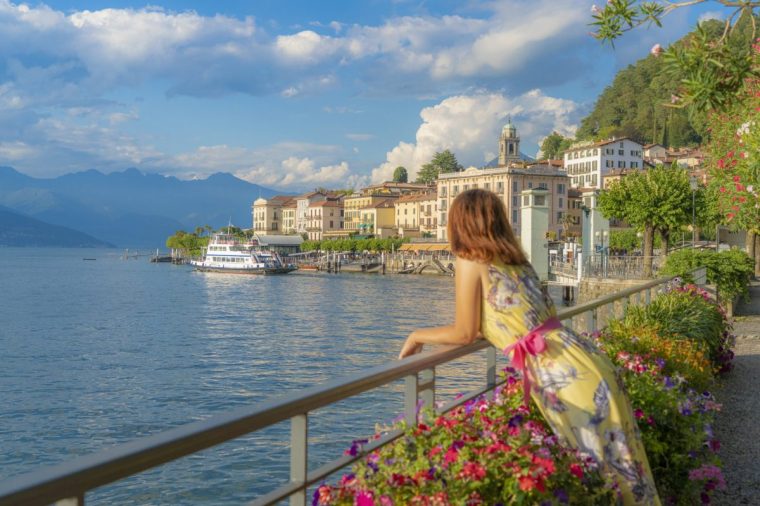Angry locals living around Italy’s Lake Como say they have had enough of the “hordes” of tourists who clog up the streets and transport around their social media-friendly city.
The city of Como, on the southern tip of Lake Como in northern Italy, near the border with Switzerland, has a population of 85,000. However, up to 200,000 visitors arrive daily in the summer to experience its old town, clear waters and Alpine views.
In the wider Como province, scattered with picturesque towns, 357,772 tourist arrivals were recorded in the first eight months of 2024, and the booming tourist industry has brought “huge wealth” to the city, according to its mayor.
However, residents told The i Paper that the sheer weight of numbers – driven by an explosion of influencer travel content on Instagram and TikTok – meant public services and basic infrastructure were now struggling to cope.

“It takes me three hours in the car to drive just a few kilometres,” Carolina Rossi, a mother who lives in Como, said. “The town is small and there are poor infrastructures. Roads are jammed with tourists, there are no parking lots and ferries aren’t enough to transport everyone.”
Mrs Rossi said that residents who commuted to work on ferries often struggled to find a place due to the “hordes” of visitors. School children like her own were frequently late and ended up missing classes, she added.
“There are no reserved places for us residents on the ferries – it’s hell. Everywhere I go, tourists and influencers crowd panoramic areas and spots to take crazy selfies. In the past years overtourism has become a year-round problem, I have been robbed of my own hometown,” she said.
When ferries are overbooked, tourists set up tents in public places such as piazzas and benches to wait – the few green areas available for children to play, Mrs Rossi said.
Mario Bianchi, a retiree who lives near the main train station, complained that trains coming from all over Italy and Europe were stopping in Como to “vomit” tourists.
“Our town has always been a border place close to Switzerland, but we’re a small town that can’t bear the burden of having so many day-trippers hop off just to shoot silly selfies,” he said.
Swimming on Lake Como’s shores is banned in many parts of the city, but Mr Bianchi said he regularly saw tourists attempting to take a dip regardless.
Lake Como has always been a popular destination for Italian and international tourists alike, but a surge in day-trippers has led to serious overcrowding in recent years.
Overtourism is also fuelling a rise in accommodation prices, with simple B&Bs now costing hundreds of euros per night, according to Ms Rossi.
The number of private rentals and holiday homes has skyrocketed by 673 per cent since 2016 as non-residents buy up homes and rent them out, leaving locals struggling to find permanent housing.
Worried residents reluctant to speak out publicly against the local administration have taken to venting their frustration by sending anonymous letters of protest to local newspapers.
The Como mayor, Alessandro Rapinese, has raised the possibility of introducing an entrance fee to tackle overtourism, inspired by Venice, which charges day-trippers €5 (£4.30) per day to access the historic centre during peak periods.
However, the fee has not yet materialised, amid lobbying by pro-tourism groups.
Rapinese also defended the role of tourism in the city, telling The i Paper it had brought huge economic benefits.
“There are worse problems in the world than overtourism,” he said. “We’ve had times when there was criminality, illegal immigrants, and when our grandparents were poor. Tourism has created jobs, many people would be unemployed by now [without it].”
Como’s popularity filled him with pride, he said, because it “means that my town is loved worldwide and people from everywhere flock here for the beauty we have.”
“I like my town being full of tourists who speak different languages, with different cultures. After all, we are all tourists”.
Rapinese said he planned to build some 200 new parking spaces for cars and motorbikes, and thanks to the bathing ban, he had avoided Como becoming like Liguria’s crowded shores.
According to the mayor, lake transport was “doing a great job”.
“Last year some six million people travelled by water from and to Como,” he added. And road traffic in his view is simply “the price to pay to share beautiful locations with everyone.
“People need to learn to slow down,” said Rapinese. “Como is packed with wonderful things to see and do. It is just like with the Vatican Museums, if you want to see the masterpieces, you must be patient and line up.”
